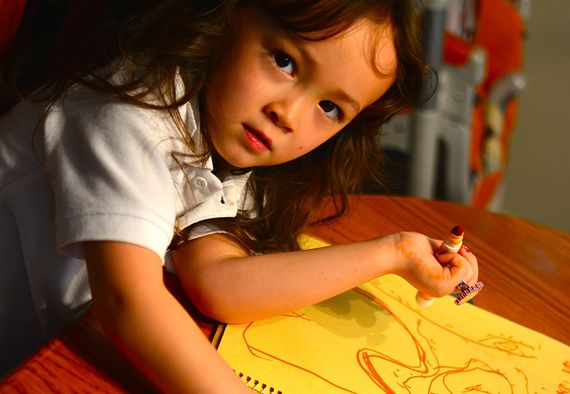What do da Vinci’s Mona Lisa and the Beatles’ Yesterday have in common? Both masterpieces are the product of a left hand. Left-handedness, present in about 10% of the population, is a feature that has been so speculated about that it is difficult to distinguish fact from myth: is there a genius typical of left-handed people? The truth is that left-handedness, its causes and consequences, are still largely a mystery to science.
In popular culture, the topic of left-handedness is usually introduced by presenting a long list of famous people who possess this trait, which has cemented the idea of the brilliant left-handers. And yet this may be more legend than fact: some claim to have traced the sources and assert that there is no reliable data on many of the names on the lists. In other cases there are nuances: Mark Twain was a right-handed man who was forced to write with the left because of the rheumatism that affected him on the right. In the case of Leonardo da Vinci, it is said that he drew with the left and painted with the right, until an injury rendered his right hand useless.

As far as historical figures are concerned, it is no surprise that finding evidence of left-handed women is even more difficult. For centuries, the use of the sinister hand—from the Latin adjective for “left,” but also meaning “unlucky” or “evil”—has been considered inappropriate, even demonic, which is why left-handers were forced to change their natural tendency. This was the case for Michelangelo, a left-handed sculptor who trained himself to paint with his right hand. This imposition gave rise to famous ambidextrous figures, such as scientist Nikola Tesla. But even discounting dubious or false cases, names like Da Vinci, Michelangelo or Tesla seem to support the idea of the left-handed genius. Is there any truth in this?
Left-handedness and the cerebral hemispheres
There does exist some specialisation of the cerebral hemispheres and their regions in some functions, and it is well known that each of them controls the opposite half of the body. However, the idea that each person is dominated by one hemisphere or the other, and that left-handers use the creative right side of their brains more, is just a myth.
In fact, if left-handedness simply consisted of an inversion of the cerebral hemispheres, the mystery would be solved. But it’s not that simple. The left cerebral hemisphere has regions specialised in language processing, and 95% of right-handed people depend above all on those areas for that task. “In right-handers, we’ve known from previous studies that the areas dedicated to language production are always on the left side of the brain,” Gwenaëlle Douaud, a neuroscientist at Oxford University (UK), told OpenMind. But curiously, “this is still true in the majority of the left-handers,” she adds. And yet, there is no single pattern: “Some can have bilateral (on both sides) activations, and some even only on the right side of the brain.”

These data suggest variations in brain wiring in left-handed people, an idea confirmed by neuroimaging studies. According to Douaud, lefties have structural differences in the white matter tracts—the large neural highways—that connect language regions. Specifically, these areas have greater functional connectivity between the two hemispheres. “Our results show that left and right sides of the brain are more in sync in those language-related regions,” the neuroscientist summarises.
In practical terms, how do these structural and functional differences translate into the skills and abilities of left-handed people? Leaving aside the uselessness of lists of brilliant lefties, the only way to reach a scientifically valid conclusion is through rigorous experimentation that compares left-handed and right-handed.
Unfortunately, the results do not reveal a clear picture either. While there have been some studies that have found in left-handed people a greater mathematical ability to solve problems, other research does not support this conclusion. Studies have been published that record a greater proportion of left-handers in a sample of artists, or that attribute to these people superior musical abilities or greater success in architectural studies. However, left-handedness has also been associated with poorer development in children and intellectual disabilities.
Left-handed genetics
Although progress has been made with regard to the relationship between structural differences in the brain and functional variations, the cause of the former is still an enigma. Once again, if there were a clear direct genetic inheritance of the left-handed trait, the mystery would be solved. But yet again, this is not the case. Studies with twins reveal that the genetic inheritance of the preferential use of the left hand approaches 25%; most children of two left-handed parents are right-handed, and many left-handed children have two right-handed parents. The fact that the overall proportion of 10% is markedly exceeded in the children of left-handed couples indicates that genetic factors do exist, but probably of a complex nature and with strong environmental modulation.

In short, there is no single left-handed gene. However, the possible intervention of a set of genes controlled by the mechanisms that establish body asymmetry during development has been proposed. In the field of left-handed genetics, the clearest clue so far can be found in a new study co-directed by Douaud and surgeon and geneticist Dominic Furniss. Analysing the genetic profiles of some 400,000 Britons, a sample that includes more than 38,000 left-handers, the researchers have identified four regions related to left-handedness, three of which produce proteins involved in the development and structure of the brain, and more specifically in the internal “scaffolding” of cells called the cytoskeleton. Scientists have associated these differences with the structural peculiarities observed in the brains of left-handed people.
There is still much to learn about the secrets of left-handedness, but this knowledge comes first and foremost when we set aside the myths. As Furniss puts it, left-handedness is simply “part of the rich tapestry of what makes us human.”
Comments on this publication